The modern idea of tourism originated in the 17th century, when wealthy Europeans embarked on “the Grand Tour” around France, Germany, Italy, and Greece. Some of the historical sites, monuments, and cultural attractions they visited possibly look much the same today as they did back then. Far more likely is that — whether through neglect, historical shifts, or renovations — many of those tourist sites bear little resemblance to their original appearance. Take a look back at six such iconic tourist sites around the world that have changed notably over the years.
Hagia Sophia – Istanbul, Turkey
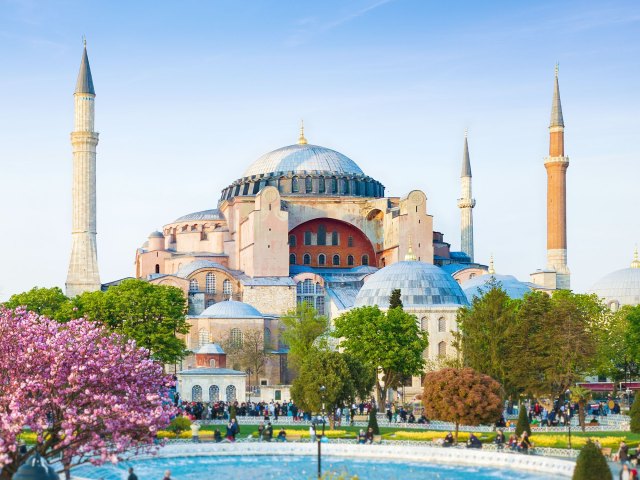
Few major monuments around the world have as storied a history as Istanbul’s Hagia Sophia. A celebration of the city’s diverse cultural influences, this iconic site dates back over 1,500 years. Built in 537 CE on the site of an earlier church, Hagia Sophia served as a Byzantine church for almost an entire millennium. After the Ottoman conquest of Constantinople in 1453, the opulent building was converted into a mosque. Four minarets, a mihrab, and Islamic calligraphy were added to the existing structure.
Life at this sacred landmark changed again in 1935, when the Turkish government converted it into a museum. It was then reverted back to a mosque in 2020. Today, outside of prayer hours, visitors can glimpse inside this UNESCO-listed monument and admire its unique blend of Byzantine and Ottoman, Christian, and Islamic designs.
Gamla Stan – Stockholm, Sweden
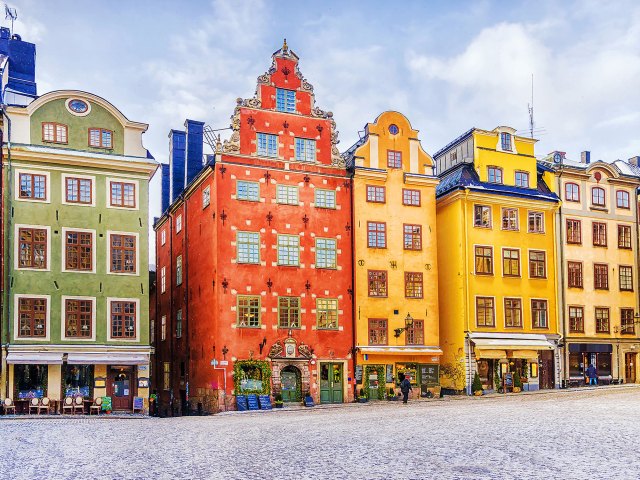
Occupying the island of Stadshomen and three islets, Gamla Stan is the historic and medieval old town of Stockholm. This district of maze-like, cobblestone alleyways is where the city was founded in the 13th century. The area is notable for its rust-colored townhouses, the majority of which were built in the 17th and 18th centuries.
But despite the original grandeur of the area, from the mid-19th to 20th centuries, Gamla Stan was thought of as an undesirable and inhospitable place to live. Historic buildings were left to decay, and a number of blocks were destroyed for the enlargement of the Riksdagshuset parliament house. In the 1980s, a cleanup and government preservation turned it into an elegant and vibrant district home to around 3,000 residents. The Nobel Museum, Kungliga Slottet royal palace, and Västerlånggatan shopping street are a few of today’s highlights in Gamla Stan.
Copacabana Beach – Rio de Janeiro, Brazil
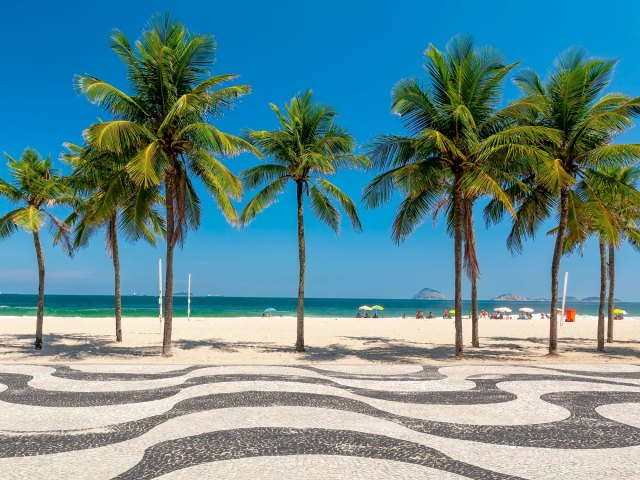
This 2.5-mile-long stretch of golden sand is the epicenter of Rio de Janeiro’s beach culture. These days, vendors on Copacabana Beach hawk caipirinhas and acai bowls to thirsty tourists, while locals show off their soccer skills to a backdrop of high-rise buildings and jungle-covered hills. But in the 1800s, this coastal paradise was little more than a rocky coastline home to fishing communities and defensive fortresses. Back then it was called Sacopenapã, which referred to a bird native to the area.
By the turn of the 20th century, tourism began to outpace the fishing industry at Copacabana Beach. Grand hotels such as the Belmond Copacabana Palace opened, and the promenade with the signature wave-like design was built in 1906. One of the biggest changes occurred in 1970, when a large landfill turned the original sliver of sand into a much wider beach capable of accommodating the thousands of tourists who flock here today.
The Parthenon – Athens, Greece

Perched atop the Acropolis in Athens, the Parthenon stands as a symbol of the architectural prowess, cultural heritage, and wealth of Ancient Greece. Dedicated to the goddess Athena, the marble temple was erected in the fifth century BCE. Its original structure featured 46 columns and dozens of metopes and sculptures, which portrayed scenes of Athenian mythology. Inside was an enormous statue of Athena made from gold and ivory.
Sadly, various occupants altered and damaged the landmark over the course of 2,500 years. It was converted into a church around 500 CE and an Ottoman mosque in the 1460s. The roof was later destroyed during an attack on Athens by the Venetians in 1687. Much like the rest of the Acropolis, the Parthenon is a fraction of its former glory, which leaves visitors with the task of imagining a fascinating, bygone era.
Times Square – New York, New York
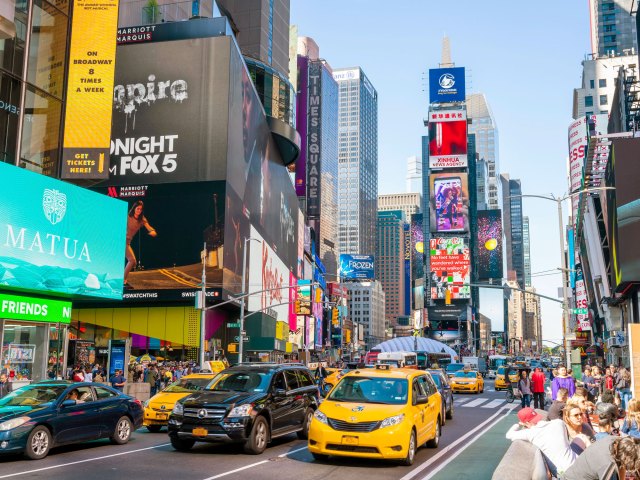
With its neon billboards, street performers, skyscrapers, and yellow taxi cabs, Times Square is perhaps New York City’s most emblematic tourist attraction. In the span of almost 150 years, this energetic intersection in the heart of midtown Manhattan has gone from glamorous to grubby and back again. Originally known as Long Acre Square, it became the site of William H. Vanderbilt’s American Horse Exchange around 1880, but at the time, it was just a large expanse framed by humble apartment buildings.
The name Times Square came into use around 1905, when The New York Times moved into the Times Tower skyscraper. Restaurants, theaters, and luxury hotels soon followed. But further development was hampered by the Great Depression, and by the 1930s the area became synonymous with mobster crime and ill-reputed forms of entertainment. The vibrant Times Square of today began to take shape in the 1990s following efforts by a succession of city mayors, and it’s now one of the country’s most-visited tourist sites.
Waikiki Beach – Oahu, Hawaii
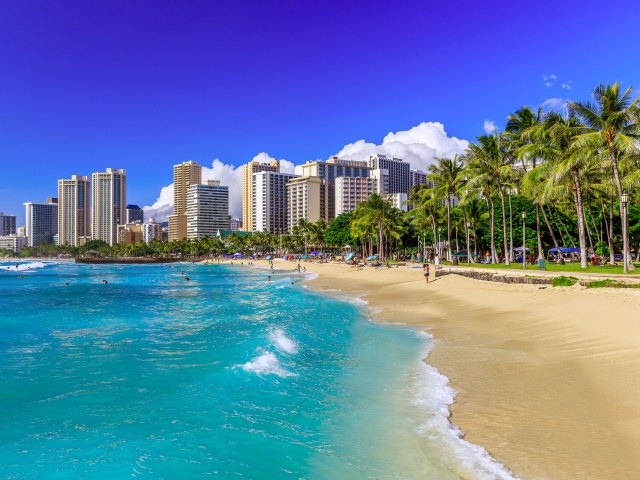
Waikiki Beach is one of Hawaii’s most recognizable destinations. It’s where flashy high-rise hotels line the palm-shaded Waikiki Beach and surfers catch rolling waves from sunrise to sunset. This bustling beachside neighborhood hasn’t always been a tourism hotspot, though.
In the 1400s, marshland comprised much of Waikiki, which was a meeting place for Oahu royalty such as Chief Kalamakua. The name Waikiki means “spouting water” in the Hawaiian language and is a reference to the area’s rivers and springs. In the 1800s, Waikiki was chosen as the location of King Kamehameha I’s royal court. Foreign tourism began to flourish in the 1830s, followed by the first road in the 1860s and a tramway in the 1880s. The inauguration of the Moana Hotel in 1901 and a visit from Elvis Presley in 1957 further helped to put Waikiki on the map and influenced a wave of tourism development. Today, more than 4 million people visit each year.
More from our network
Daily Passport is part of Inbox Studio, which publishes content that uplifts, informs, and inspires.















